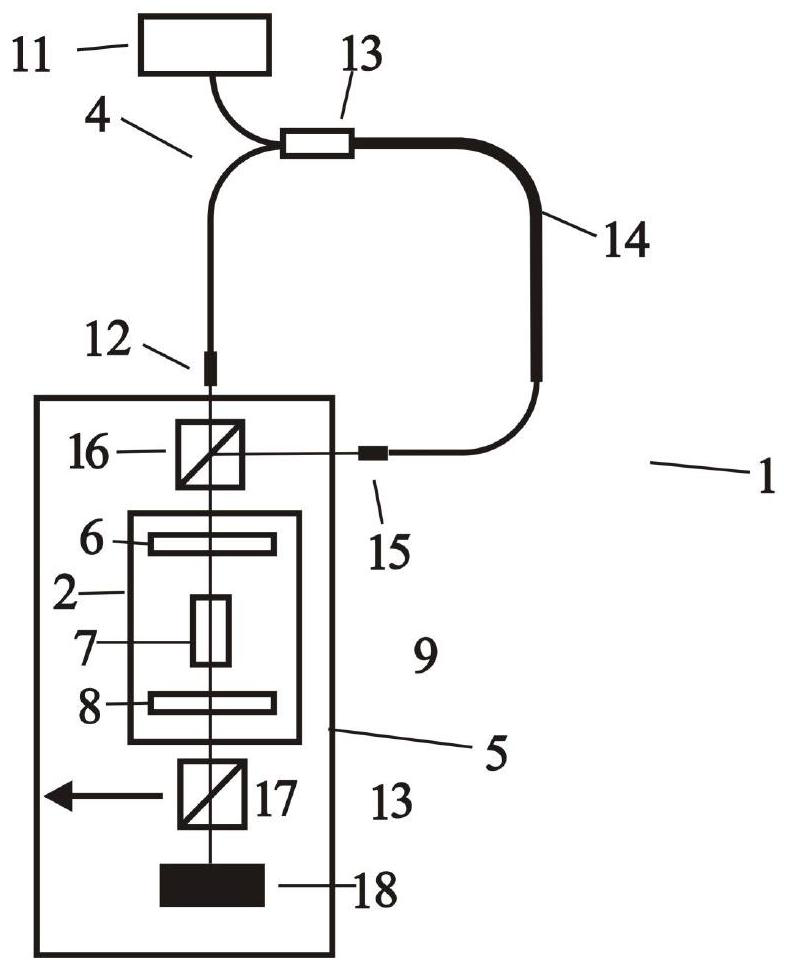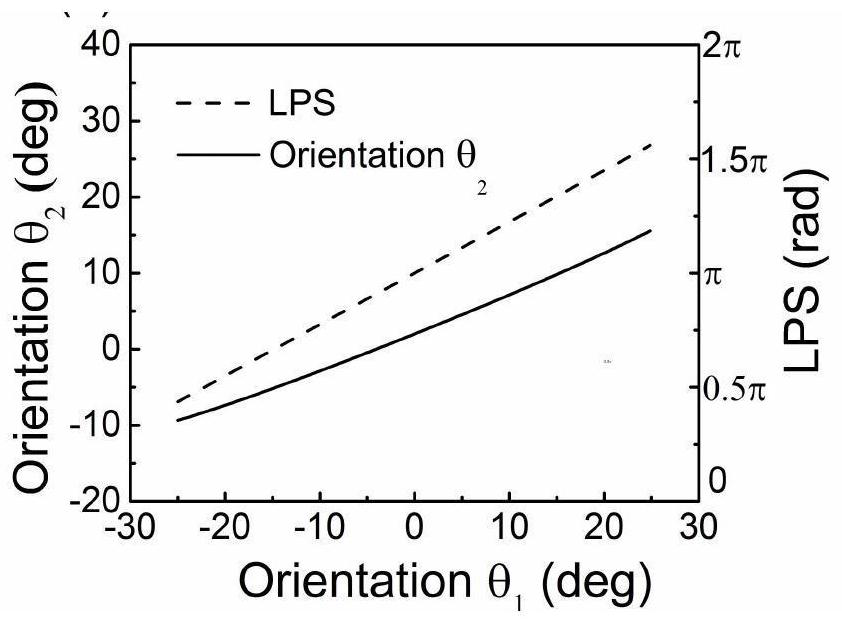Pulse energy improving method of self-starting Figure-9 passive mode-locked fiber laser
A fiber laser, pulse energy technology, applied in lasers, laser parts, phonon exciters, etc., can solve the problems of output pulse energy limitation, continuous light height, increase pump power, etc., to improve the nonlinear phase shift difference. , the effect of increasing the output power
- Summary
- Abstract
- Description
- Claims
- Application Information
AI Technical Summary
Problems solved by technology
Method used
Image
Examples
Embodiment Construction
[0047] In this embodiment, such as figure 1 As shown, a self-starting Figure-9 passive mode-locked fiber laser pulse energy improvement method is applied to Figure-9 fiber composed of equivalent NALM ring cavity 4, linear arm 5, rotating motor 10 and pump source 11. Laser 1;
[0048] The equivalent NALM ring cavity 4 includes: a first polarization-maintaining fiber collimator 12, a polarization-maintaining fiber wavelength division multiplexer 13, a polarization-maintaining erbium-doped fiber 14 and a second polarization-maintaining fiber collimator 15;
[0049] The signal end of the polarization-maintaining fiber wavelength division multiplexer 13 is connected to the polarization-maintaining fiber collimator 12, and the pump end of the polarization-maintaining fiber wavelength division multiplexer 13 is connected to the output end of the pump source 11. The common end of the multiplexer 13 is the polarization-maintaining erbium-doped fiber 14, and the polarization-maintaining erb...
PUM
 Login to View More
Login to View More Abstract
Description
Claims
Application Information
 Login to View More
Login to View More - R&D
- Intellectual Property
- Life Sciences
- Materials
- Tech Scout
- Unparalleled Data Quality
- Higher Quality Content
- 60% Fewer Hallucinations
Browse by: Latest US Patents, China's latest patents, Technical Efficacy Thesaurus, Application Domain, Technology Topic, Popular Technical Reports.
© 2025 PatSnap. All rights reserved.Legal|Privacy policy|Modern Slavery Act Transparency Statement|Sitemap|About US| Contact US: help@patsnap.com



